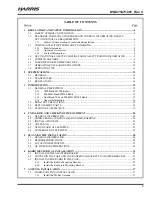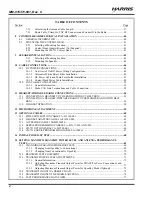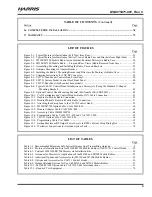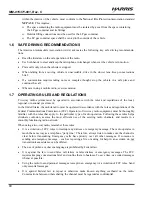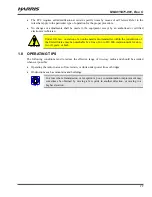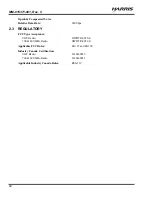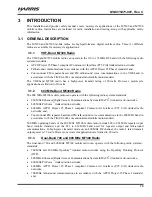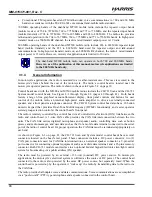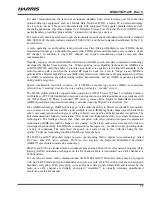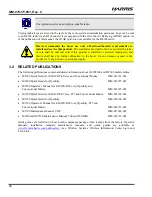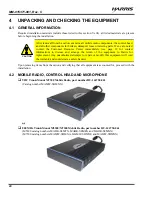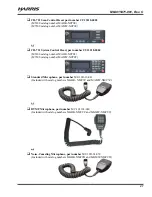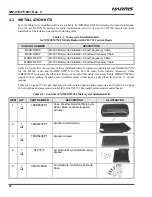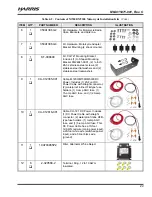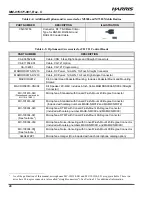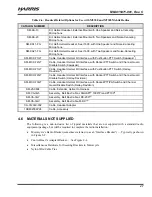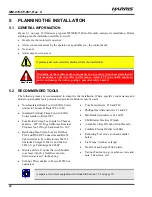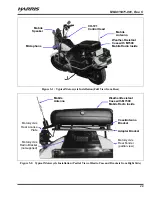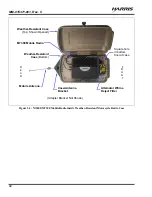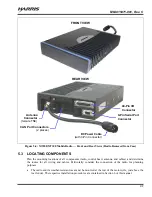
MM-015371-001, Rev. C
17
For data communications, the radio has an industry-standard 9-pin serial interface port for connecting
optional data-type equipment, such as a Mobile Data Terminal (MDT), a laptop PC, an external display,
or a key-entry device. This port works seamlessly with equipment from popular manufacturers and off-
the-shelf applications. OpenSky employs User Datagram Protocol over Internet Protocol (UDP/IP) data
packet transfers, providing “plug and play” connectivity for data-type devices.
The radio and control head exceed tough environmental specifications included within military standard
MIL-STD-810F, the radio industry standard TIA/EIA-603, and the radio standard established by the U.S.
Forest Service.
A radio operating on an OpenSky radio network uses Time-Division Multiple-Access (TDMA) digital
modulation technology on the radio frequency link. TDMA allows multiple radio users to share a single
RF channel. In addition, a single RF channel can support simultaneous digital voice and data
communications.
OpenSky employs Advanced Multi-Band Excitation (AMBE) speech and data compression technology
developed by Digital Voice Systems, Inc. When operating on an OpenSky radio network, AMBE gives
an M5300/M7300 radio the ability to provide exceptional voice quality via the limited bandwidth of the
radio frequency path, even when the received RF signal is weak (i.e., even in “fringe” areas). AMBE is
performed by a Digital Signal Processor (DSP) integrated circuit within the radio programmed to perform
an AMBE compression algorithm during mobile transmissions, and an AMBE expansion algorithm
during mobile reception.
Speech compression electronic circuitry—be it AMBE or another type such as IMBE—is sometimes
referred to as “vocoding” circuitry for voice coding, or simply a “vocoder” circuit.
The M7300 mobile radio also supports radio operation on APCO Project 25 Phase I compliant Common
Air Interface (P25 CAI) trunked radio networks, and operation in a talk-around mode in accordance with
the APCO Project 25 Phase I standard. P25 radio systems utilize Improved Multi-Band Excitation
(IMBE) speech/data compression technology, also developed by Digital Voice Systems, Inc.
Like AMBE technology, IMBE technology gives the radio the ability to deliver exceptional voice quality,
even in areas where the received RF signal strength is weak. IMBE replicates human speech better than
other voice compression technologies, resulting in better voice quality and better speaker recognition. The
Telecommunications Industry Association (TIA) funded an independent study to evaluate compression
technologies. The findings showed that when compared with other industry-recognized compression
technologies, IMBE provided the highest voice quality. In the study, radio users were asked to listen to
coded speech produced by four different compression technologies (i.e., vocoder circuits) operating under
a variety of conditions. The users rated the speech on a scale of one to five, with five being the best
quality. Under each operating condition, IMBE was rated the best.
The M5300 and M7300 mobile radios can also operate using Harris’ digital voice technology called
ProVoice. Like P25 radio systems, ProVoice also employs the Improved Multi-Band Excitation
(IMBE™) speech/data compression technology.
EDACS and ProVoice trunked radio networks employ analog FM and 2-level Gaussian Frequency-Shift
Keying (GFSK) modulation techniques on the RF channels. Data is transmitted on an RF channel at a
9600 baud rate.
For over-the-air secure radio communications, the M5300 and M7300 mobile radios may be equipped
with 64-bit DES (Data Encryption Standard) encryption or with 128/256-bit AES (Advanced Encryption
Standard) encryption. With encryption, voice and/or user data signals transmitted and received by the
radio on an RF channel are digitally encrypted (“scrambled”) to virtually eliminate unauthorized
monitoring via the RF channel.

